Words and photos by Kona Ambassador Colt Fetters.
I can’t tell you how many times I’ve heard “the best bike for bikepacking, is the bike you already have.” Typically said by an experienced bikepacker (or blogger) who just also happens to have the absolute latest and greatest the industry has to offer. Dynamo hubs, custom bikepacking bags, and titanium frames. To be fair, I’ve said the same thing. I’ve found myself writing it in blog posts for prominent websites, preaching it at workshops and conferences, then I realized that it’d been an awful long time since I myself had bikepacked with the basics.
Mountain biking for me started with rigid single speeds. We’d tear through the humid forests of Alabama, all the while claiming there was no need for silly contraptions like suspension and derailleurs. But eventually bicycle technology got the best of me and I started riding more complex bikes.
I miss the simplicity. So my plan was to get back to the basics. I borrowed a steel frame 29er, the Kona Unit. Complete with flat pedals, mediocre brakes, a sorry saddle, and one lonely cog. I grabbed a couple specific bikepacking bags, a luxury no doubt, but not necessarily extravagant for most. In the spirit of minimalism, I forwent a stove and a tent, instead opting for cold food and a homemade Tyvek bivy sack.
I set out with an ambitious plan to cover a loop of techy singletrack around the La Plata mountains not far from my home. Just about as soon as I left the car, dark clouds rolled overhead. The monsoon season was in full swing in SW Colorado and it surely wasn’t going to take pity on me. Just as soon as the showers started so did the lightning. Up and over 12,000’ foot passes I’d alternate between pushing and riding. Careful to time the passes between bouts of lighting. Descending from the final pass, the cold set in. Drenched to the bone I hopped into my DIY bivy. There I lay shivering for the next hour.
‘How silly of me,’ I thought. In an effort to get back to the basics, I minimalized to a point where my margin for safety was too slim. After fighting with my pride, I realized there was nothing to prove. So I packed up. And in the sliver of daylight left, I pedaled 20 miles to the nearest town. I paid for a hostel, took a hot shower, and found the nearest brewery. To be honest, I felt like a failure. I’d set out to prove that bikepacking could be simple. However, due to my minimalist kit, I couldn’t stick out the storm.
There I sat, drinking my beer when a local approached. “Is that your bike out there? Are you on a bike tour?” he asked? And so we struck up a conversation. He shared stories of his cross country travel via bike and expressed how he missed those times. Through this I realized, although my tour didn’t go as planned, it was far from a failure. Perhaps this was the simplest style after all. Riding through the mountains, staying in towns, and carrying even less than I set out with.
The next morning I pedaled back the way I had come. Typically I opt for loops during bikepacking trips but again I reveled in the simplicity. No longer were dark clouds hanging overhead. Thunder and lightning were replaced with blue skies and singing birds. Slowly, the rhythm of grinding uphill single-speed came back to me. No worries of a dirty drivetrain or of rogue rocks that could easily rip off a derailleur. After an hour of moving through the mountainous landscape, my mind grew restless. Usually it’d be about this time that I’d slip in an earbud and listen to music or a podcast but instead, I refrained. I was set on embracing the ethos of the trip. And again, I surprised myself. Soon the boredom passed and my thoughts wandered, my brain unencumbered by its regular artificial stimulation.
Maybe my original plan didn’t quite work out however, I found what I was looking for. A solo cycling experience carrying only the bare minimum.



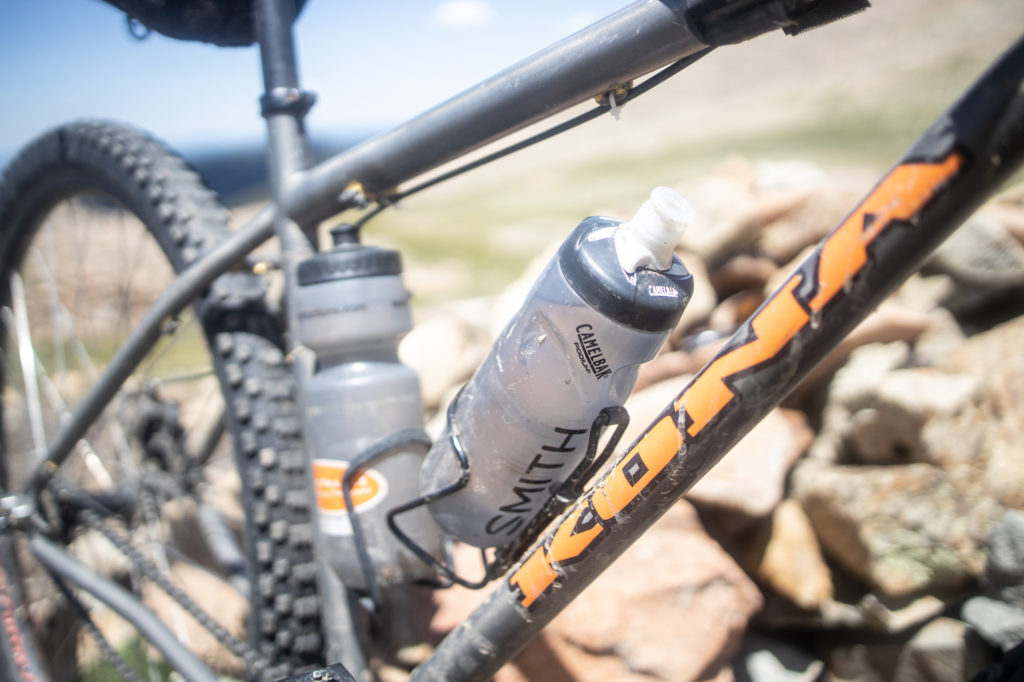
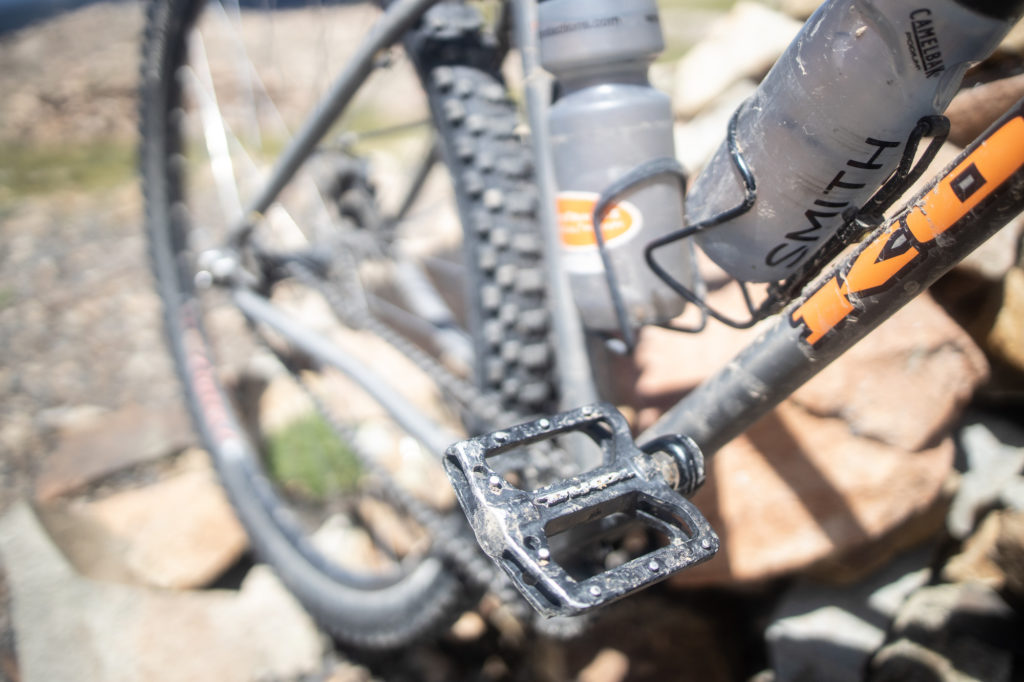
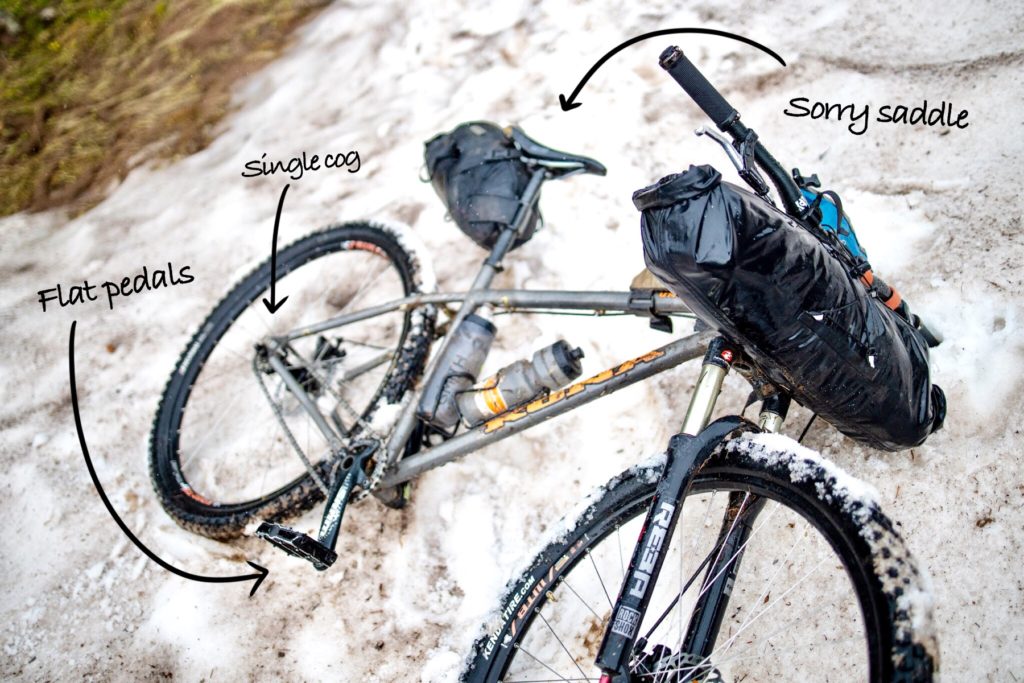

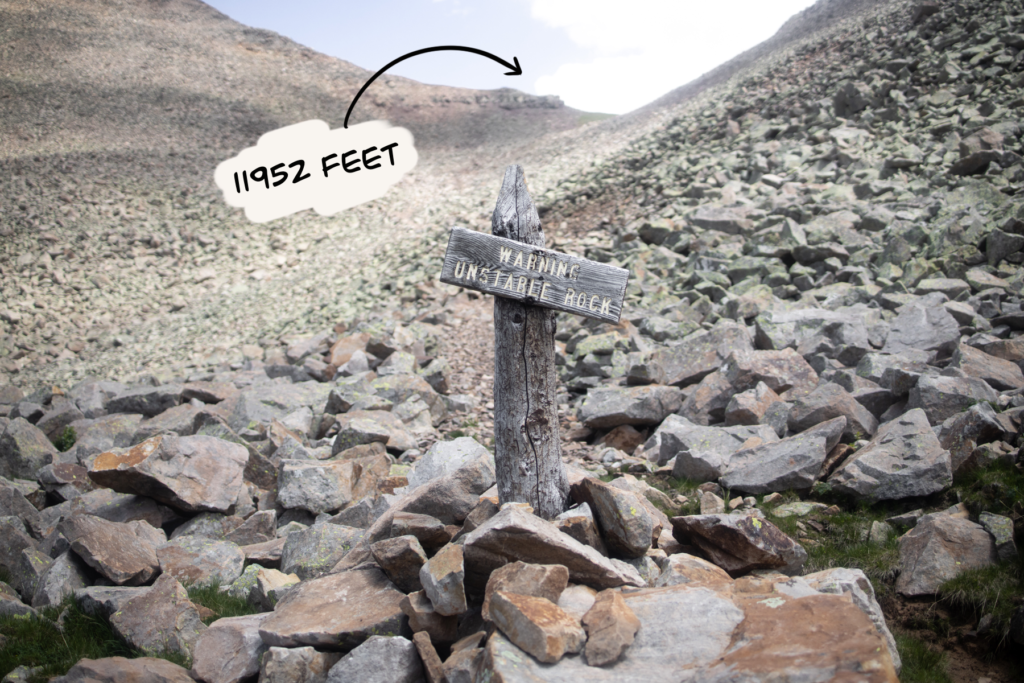
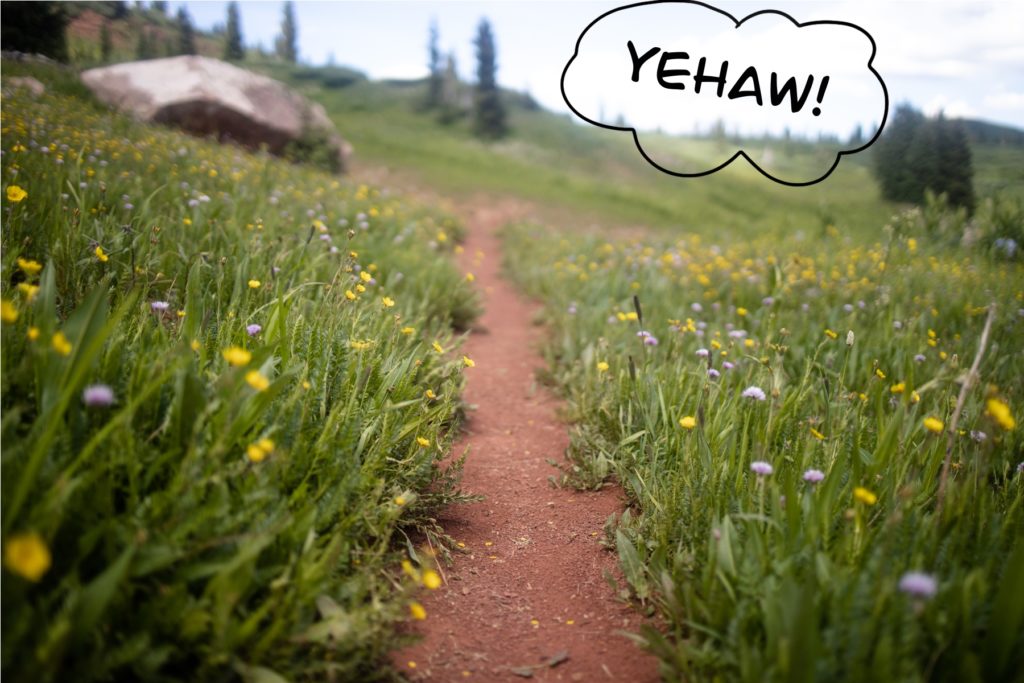
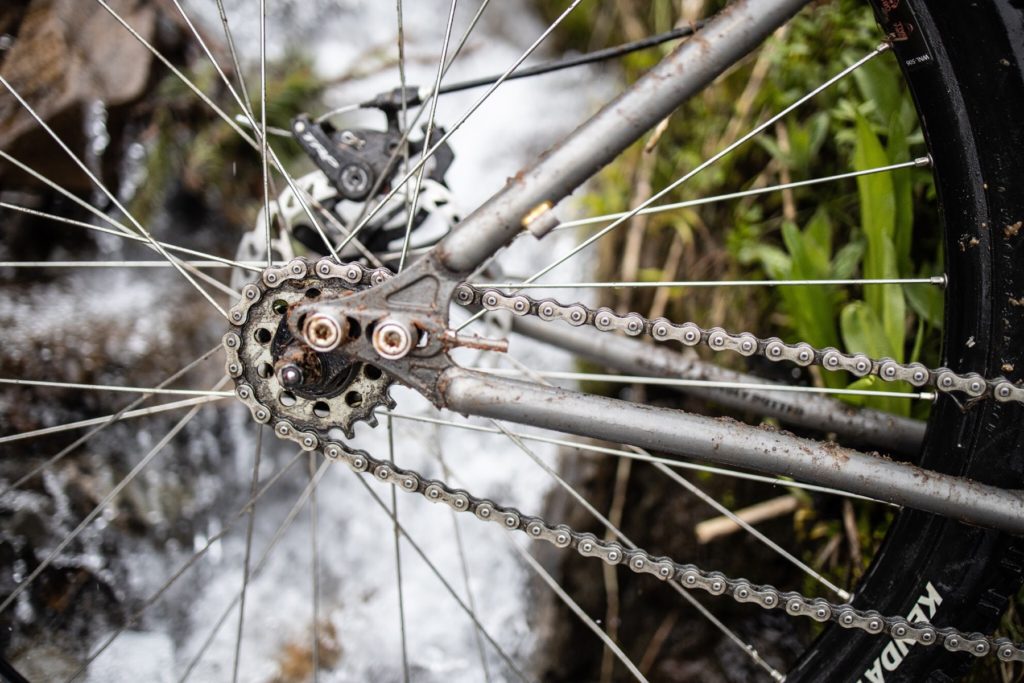

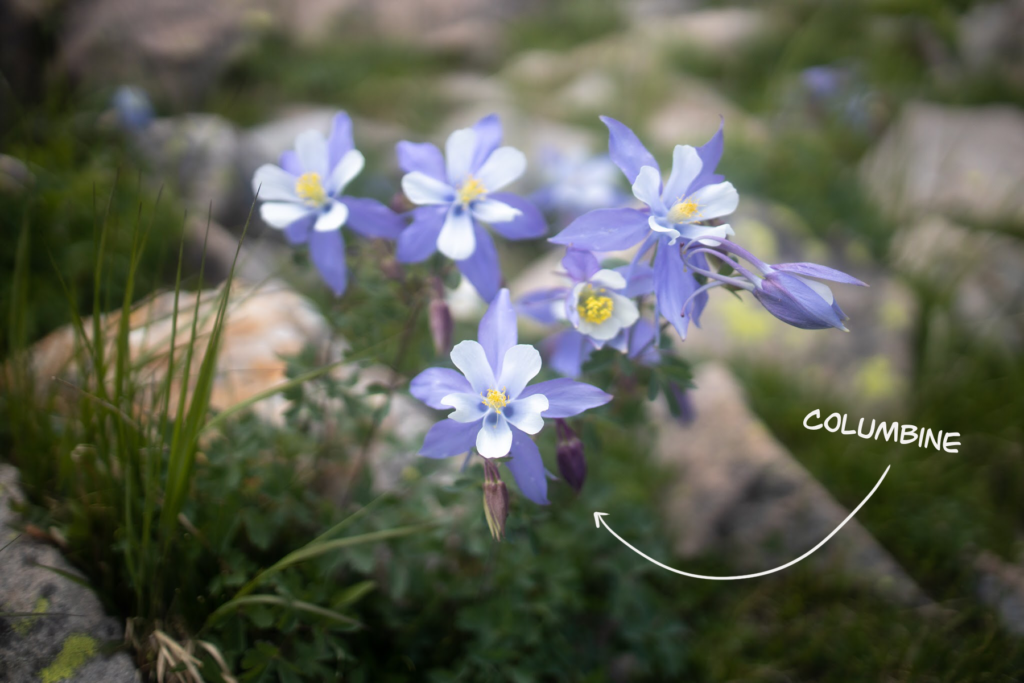
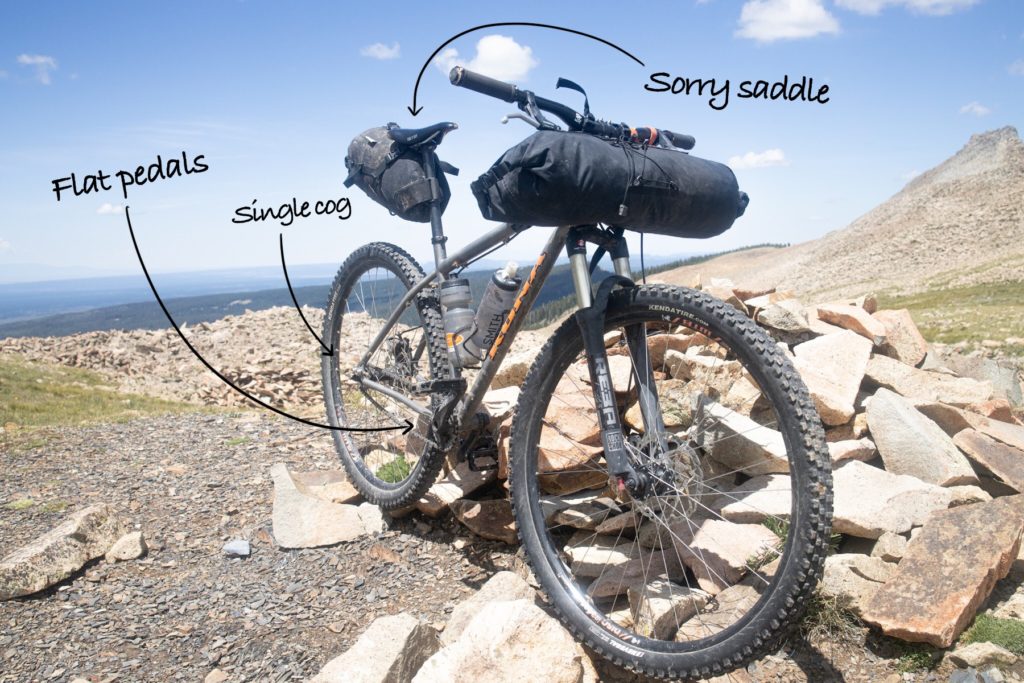

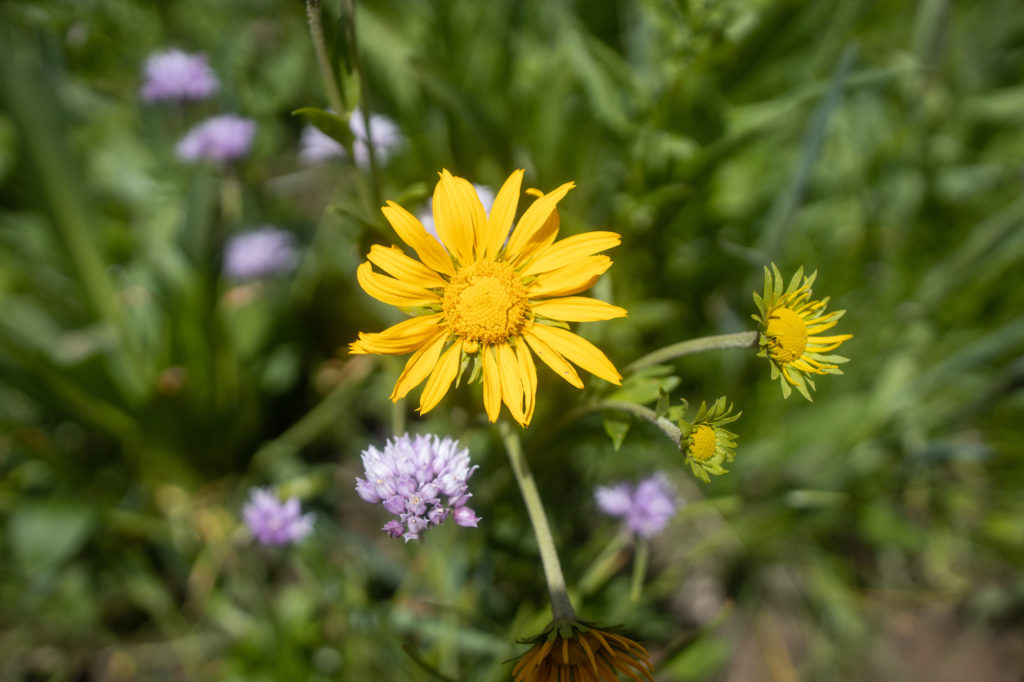

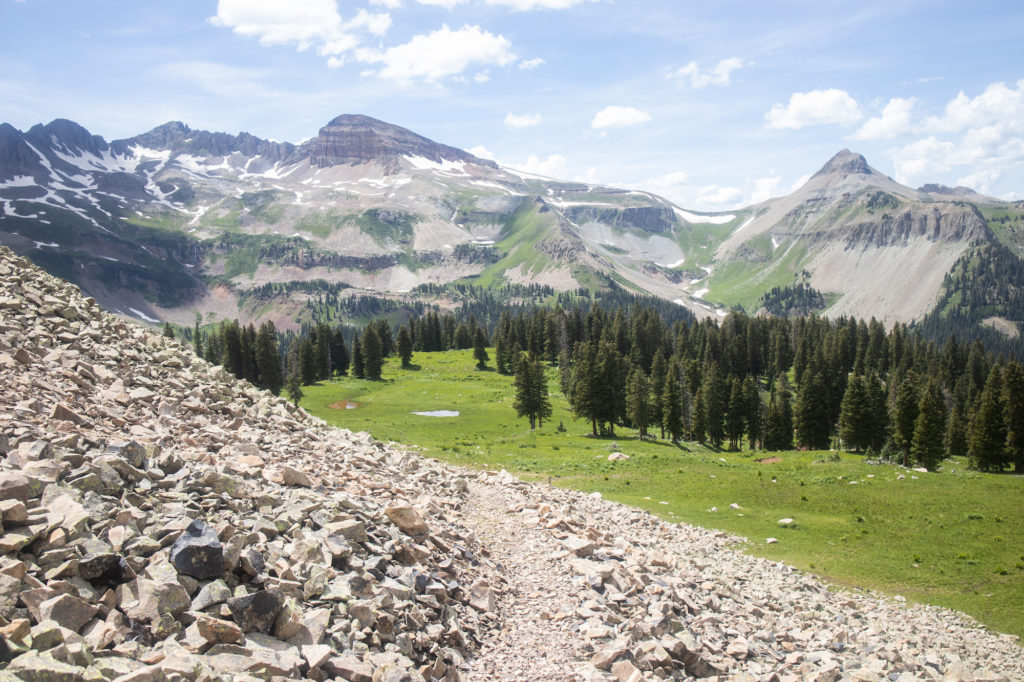

You must be logged in to post a comment.